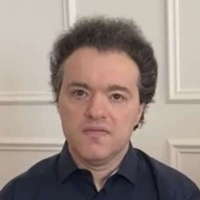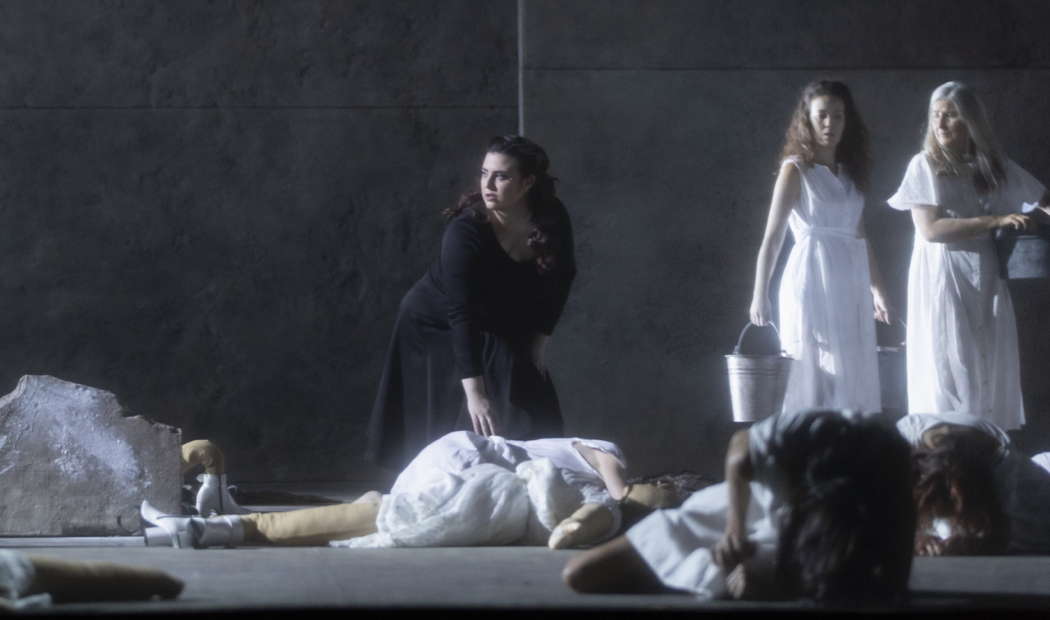 LISTENING TO TCHAIKOVSKY: Béla Hartmann uses his knowledge of Eastern Europe to argue against the banning of all Russian culture following Vladimir Putin's invasion of Ukraine.
LISTENING TO TCHAIKOVSKY: Béla Hartmann uses his knowledge of Eastern Europe to argue against the banning of all Russian culture following Vladimir Putin's invasion of Ukraine.
Bold and Engrossing
GIUSEPPE PENNISI reviews
Verdi's 'Les Vêpres Siciliennes'
at Teatro dell'Opera di Roma
If it were a race, it can be said that for the inauguration of the 2019-2020 opera and ballet season, Teatro dell’Opera di Roma would beat La Scala. The determinants are the originality of proposal, the involvement of all the workers of the institution in the choice and staging of the opera selected for the 11 December 2019 evening: Giuseppe Verdi's Les Vêpres Siciliennes. The theatre was filled to the hilt. I was in the audience. I discussed the genesis of the opera and its performance history on 21 May 2011, when I reviewed a performance at the Teatro San Carlo in Naples.
Even at New York's Metropolitan Opera House, Les Vêpres Siciliennes is performed in Italian, also when the (nearly) full five act original version with a long third act ballet is on stage. In Italy, only Teatro dell'Opera di Roma and Teatro San Carlo in Naples produced the full unabridged version in French, in, respectively, 1997 and 2011. The opera is long and colossal, similar to those that enthralled the Imperial Opera House in Paris when Verdi, for a fabulous fee, signed the contract that led to Les Vêpres Siciliennes. In 1855, Les Vêpres Siciliennes had as many as sixty-two performances in Paris. In short, it was a major hit and the theatre recouped the high fee paid to Verdi and the huge production costs; it also made a handsome profit.
Verdi had already worked for 'la grande boutique' - this was his name for the main Paris Opera House - in 1847 when he had been invited to adapt I Lombardi alla Prima Crociata to French taste and habits by translating the text, adding ballet music and changing the title to Jérusalem. But Les Vêpres Siciliennes was his first full experience with the workings of the Parisian theatre. Thirteen years later, in 1867, he was back in Paris for a new five act and ballet opera, Don Carlos, conceived especially to suit the French taste.
Verdi was well aware that the road to world fame, and financial success, went through Paris. He was ready to make great stylistic concessions to la grande boutique. He was nonetheless uneasy with the planned work because the libretto by Scribe and Duveyrier did not please him. He liked even less all the ceremonial processions and arbitrarily inserted ballets. The months of rehearsal, including continuous changes to the libretto (during the course of composing the music), proved an arduous, tiring and irritating way of operating.
This background information is needed to explain why the original French Vêpres Siciliennes had comparatively limited staging until the mid-1970s, when it was revived in Paris. The plot is cumbersome and, even though it had been commissioned by the Emperor Napoleon III Theatre, in Italy it was considered 'subversive' because its title is linked to a semi-legendary episode of a Sicilian revolt against the French way back in the thirteenth century. Thus, for censorship reasons, the title was changed (to Giovanna de' Guzman) and the plot moved from Sicily in 1282 to Portugal. In the process, several other changes - mostly cuts - were introduced by impresarios conscious of the very high production costs. Finally, in some versions, the final scene was modified to add a happy ending, a wedding banquet and a rondo.
Nonetheless, this opera has marvelous music, from the overture, the longest Verdi wrote. It is often presented as a concert piece. It is made up of themes drawn from the opera. It is in two movements: a Largo, full of rhythmic tragic figures, even in its most lyrical major mode section, and an Allegro agitato main theme, drawn from the Henry-Guy duet in the third act. The Allegro agitato is repeated twice before a noisy Prestissimo brings the piece to a close. Also there are important arias, duets and concertato at the end of four of the five acts. The ballet music is some of Verdi's best.
The emphasis on the Henry-Guy duet is important. It shows that the opera has as its focal point the tormented father-son relationship - a main theme of Verdi's operas - and very little to do with the Italian national unification movement - the Risorgimento - as the censors, in their stupidity, thought. Musically, granted the very difficult production problems of a passionate and violent five acts of action, the opera marks a turning point in both strictly formal terms and in larger matters of operatic structures and conventions: it moves away from traditional melodrama and shows new emerging stylistic features that would be associated with subsequent Verdi works.
In this bold and innovative Roman production, the setting is contemporary but no precise location or period is identified. Usurpers have taken the land and the women to the rightful owners who rebel to get them back. There is a single basic set, as in a 2013 Royal Opera House production, available on DVD. In the British production, the set is the Opéra-Palais Garnier in the mid-nineteenth century (with the choir in the boxes). In this production, Valentina Carrasco (director), Richard Peduzzi (sets), Luis F Cavalho (costumes) and Peter van Praet (lighting) bring out the collective and individual drama in an arid Sicily, burned by the sun, where the sea leaks on the horizon but only in the second of five acts. It seems to be in the central Sicily of sulphur mines and stone quarries. The set elements are simple, also due to structural aspects of the opera house, but effective. The political reading is intertwined with the intimate drama - the relationship between father and son.

A scene from Opera di Roma's Les Vêpres Siciliennes. Photo © 2019 Yasuko Kageyama
The musical reading by Daniele Gatti is possible thanks to the excellent level of the Orchestra of Teatro dell’Opera di Roma. It is very different from those, for example, by Gianluigi Gelmetti, heard in Naples in 2011, and the then young Riccardo Chailly in a production (of the Italian version) in Bologna in 1986, memorable for the vocal cast, the stage direction by Luca Ronconi and the sets and costumes by Pasquale Grossi.
Gatti emphasizes better than others how Verdi shortens the middle times in between musical numbers. Gatti also shows quite well the intertwining of the various main themes, especially the theme of the relationship between father and son with the others - ie political struggle, love between Hélène and Henry, and Jean Procida's determination. The leading theme for the relationship between father and son takes on a strong melodic connotation that Gatti already shows in the great orchestral introduction.
With a real coup de théâtre, the ballet of the third act is not the usual decorative element that ends up in the conspiracy against the French, but the re-enactment of the previous political and social events through the memories (and feelings) of the protagonists. Some disliked it, but it was applauded warmly by most in the audience.

The Act III ballet in Opera di Roma's Les Vêpres Siciliennes. Photo © 2019 Yasuko Kageyama
As in all grand opéra there are numerous characters on stage, but the real protagonists are Hélène, Henri, Guy de Monfort, Jean Procida and the choir, directed admirably, as always, by Roberto Gabbiani.
Among the protagonists, the men are perfect in their French diction, always a difficult challenge for non-native singers. Michele Pertusi is Jean Procida - the only character who does not have a psychological development in the work - of great impact since the aria 'Palerme, mon pays' earned him open-stage applause.

Michele Pertusi as Jean Procida in Opera di Roma's Les Vêpres Siciliennes. Photo © 2019 Yasuko Kageyama
John Osborn's Henry has the right high texture and gorgeous treble that he sports in the duet with Roberto Frontali (Guy de Montfort), 'Au sein de ma puissance', and in the aria 'Ainsi vous gémissez'.

Roberto Frontali as Montfort and John Soborn as Henry in Opera di Roma's Les Vêpres Siciliennes. Photo © 2019 Yasuko Kageyama
There were also other occasions for open-stage applause. Hélène is Roberta Mantegna, a dramatic soprano of agility, who began a brilliant career with the Teatro dell’Opera finishing school; in the first act she contained the volume that exploded in the others, especially in the Act V aria 'Merci, jeunes amie'.

Roberta Mantegna as Hélène in Opera di Roma's Les Vêpres Siciliennes. Photo © 2019 Yasuko Kageyama
There were about ten minutes of applause as the curtain fell.
Copyright © 14 December 2019
Giuseppe Pennisi,
Rome, Italy




